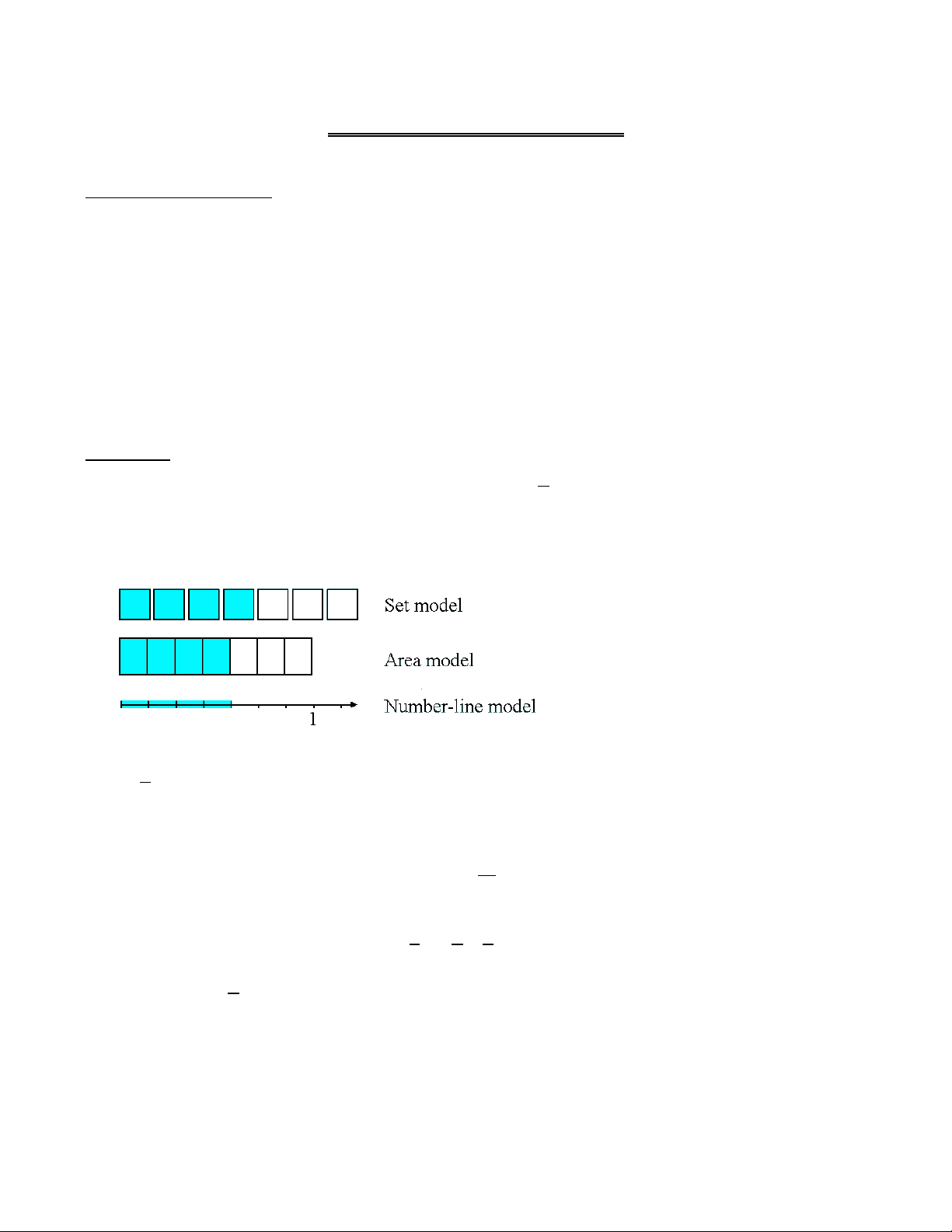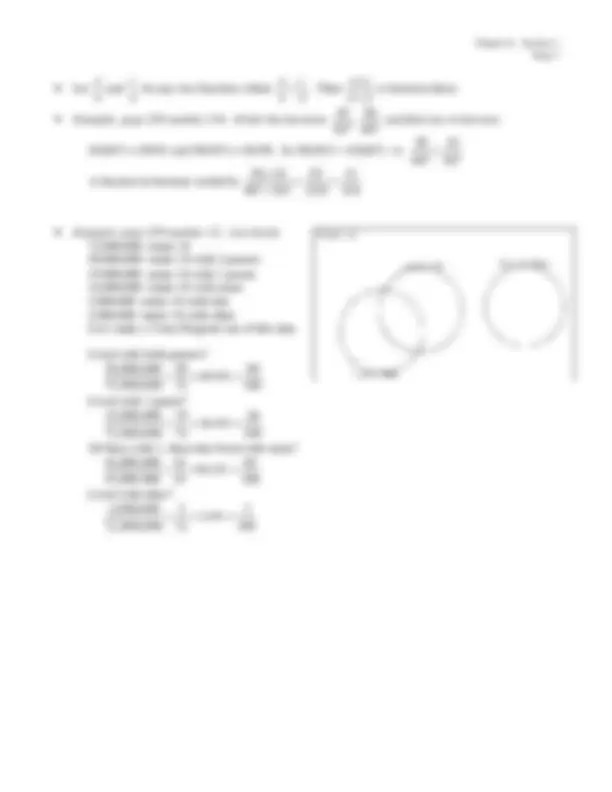



Study with the several resources on Docsity

Earn points by helping other students or get them with a premium plan


Prepare for your exams
Study with the several resources on Docsity

Earn points to download
Earn points by helping other students or get them with a premium plan
Community
Ask the community for help and clear up your study doubts
Discover the best universities in your country according to Docsity users
Free resources
Download our free guides on studying techniques, anxiety management strategies, and thesis advice from Docsity tutors
The concept of fractions, their historical perspective, definitions, visual representations, simplification, equivalence, and inequalities. It covers the part-whole model, set model, area model, and number line model of fractions. It also explains how to test for equivalency using the relation a/b = c/d if and only if ad = bc.
Typology: Study notes
1 / 3

This page cannot be seen from the preview
Don't miss anything!


Page 1
Homework (page 226) problems 1-
A Historical Perspective :
Definitions :
a b
, where a and b are whole numbers
( b ≠ 0 ). Here we have a equal parts (or portions) of all parts (or the whole) b
Doing so you would arrive at the solution
(which is wrong)
In reality, when you use a ruler, you measure parts of the whole out of one unit So you would therefore have
a b
, a is called the numerator and b is called the denominator
Page 2
= if and only if ad = cb
in simplest form
294 7 42 42 3 14 14 63 7 9 9 3 3 3
i.e.
i.e.
(this will be studied further in section 6.2)
Inequalities with Fractions :
, then a b c c
< if and only if a < b
a c b d
, then
a c b d
< if and only if ad < bc
NOTE: There is a 'problem' with the above theorem!
i.e. we know that
− <. In cross multiplying we find 3 < – 4? What went wrong?